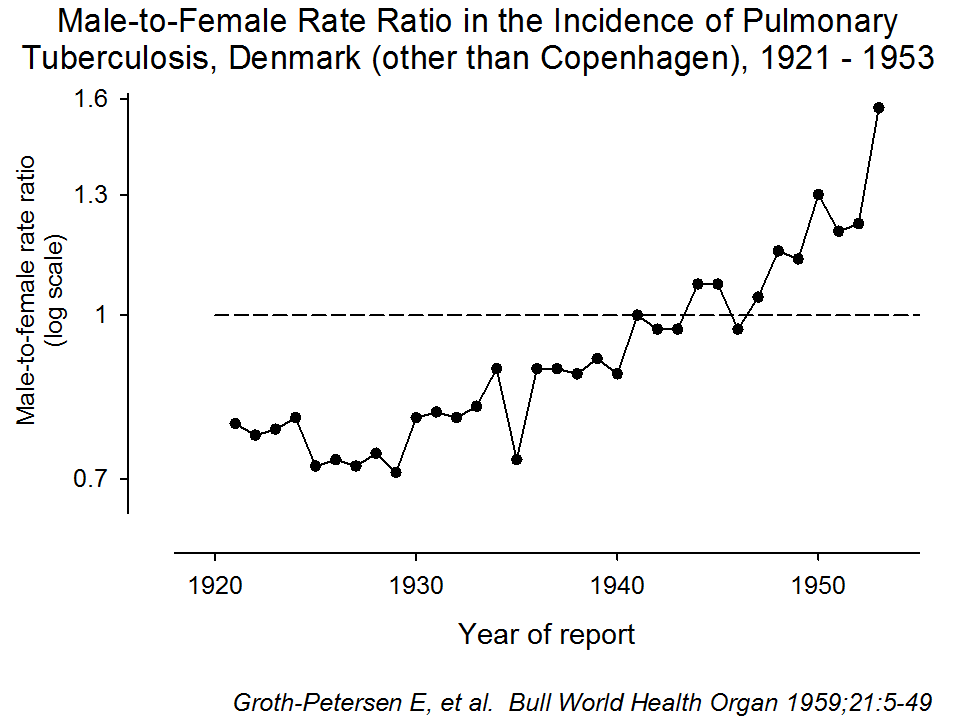 |
|
| |
|
|
| Slide |
093 |
Epidemiologic Basis of Tuberculosis Control |
 |
Next |
 |
 |
Previous |
 |
First |
 |
Last |
The male-to-female ratio of tuberculosis notification rates in Denmark (outside Copenhagen) shows an almost steady change between 1920 and the 1950ies.
In the 1920ies, perhaps only a quarter escaped infection by age 20 years, and sex-specific differences in the prevalence of infection at that age might have been small. Therefore, the higher incidence rates among young women (because of their larger disease risk given infection).
With the decrease in infection risk, fewer young adults are infected, and sex-differences in infection may become more prominent. Males become the higher infection prevalence group and start offsetting the inverse disease risk ratio.
With declining risk and prevalence of infection, the age of tuberculosis patients increases, further increasing the male-to-female disease ratio (because men’s risk increases with age relative to females). |
| |
|
Go to top
Last update:
September 10, 2010